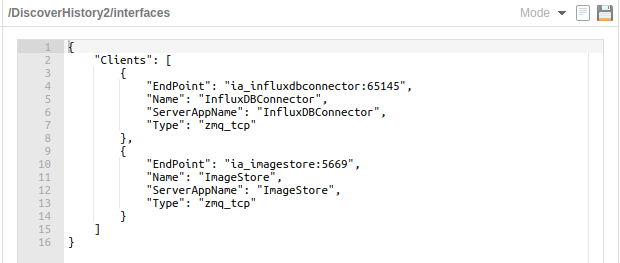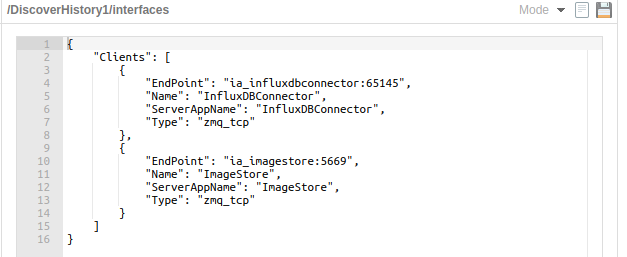Contents¶
DiscoverHistory Tool¶
You can get history metadata and images from the InfluxDB and ImageStore containers using the DiscoverHistory tool.
Note
In this document, you will find labels of ‘Edge Insights for Industrial (EII)’ for file names, paths, code snippets, and so on. Consider the references of EII as Open Edge Insights for Industrial (Open EII). This is due to the product name change of EII as Open EII.
Build and Run the DiscoverHistory Tool¶
This section provides information for building and running DiscoverHistory tool in various modes such as the PROD mode and the DEV mode. To run the DiscoverHistory tool base images should be on the same node. Ensure that on the node where the DiscoverHistory tool is running, the ia_common and ia_eiibase base images are also available. For scenario, where Open EII and DiscoverHistory tool are not running on the same node, then you must build the base images, ia_common and ia_eiibase.
Prerequisites¶
As a prerequisite to run the DiscoverHistory tool, a set of config, interfaces, public, and private keys should be present in etcd. To meet the prerequisite, ensure that an entry for the DiscoverHistory tool with its relative path from the [WORK_DIR]/IEdgeInsights] directory is set in the video-streaming-storage.yml file in the [WORK_DIR]/IEdgeInsights/build/usecases/ directory. For more information, see the following example:
AppContexts:
- VideoIngestion
- VideoAnalytics
- Visualizer
- WebVisualizer
- tools/DiscoverHistory
- ImageStore
- InfluxDBConnector
Run the DiscoverHistory tool in the PROD mode¶
After completing the prerequisites, perform the following steps to run the DiscoverHistory tool in the PROD mode:
Open the
config.jsonfile.
#. Enter the query for InfluxDB. #.
Run the following command to generate the new
docker-compose.ymlthat includes DiscoverHistory:python3 builder.py -f usecases/video-streaming-storage.yml
Provision, build, and run the DiscoverHistory tool along with the Open EII video-streaming-storage recipe or stack. For more information, refer to the Open EII README.
Check if the
imagestoreandinfluxdbconnectorservices are running.Locate the
dataand theframesdirectories from the following path:/opt/intel/eii/tools_output. ..Note: The
framesdirectory will be created only ifimg_handleis part of the select statement.
#. Use the ETCDUI to change the query in the configuration. #.
Run the following command to start container with new configuration:
docker restart ia_discover_history
Run the DiscoverHistory tool in the DEV Mode¶
After completing the prerequisites, perform the following steps to run the DiscoverHistory tool in the DEV mode:
Open the [.env] file from the
[WORK_DIR]/IEdgeInsights/builddirectory.Set the
DEV_MODEvariable astrue.
Run the DiscoverHistory tool in the zmq_ipc Mode¶
After completing the prerequisites, to run the DiscoverHistory tool in the zmq_ipc mode, modify the interface section of the config.json file as follows:
{
"type": "zmq_ipc",
"EndPoint": "/EII/sockets"
}
Sample Select Queries¶
The following table shows the samples for the select queries and its details:
Note
Include the following parameters in the query to get the good and the bad frames:
The following examples shows how to include the parameters:
“select img_handle, defects, encoding_level, encoding_type, height, width, channel from camera1_stream_results order by desc limit 10”
“select * from camera1_stream_results order by desc limit 10”
Multi-instance Feature Support for the Builder Script with the DiscoverHistory Tool¶
The multi-instance feature support of Builder works only for the video pipeline ([WORK_DIR]/IEdgeInsights/build/usecase/video-streaming.yml). For more details, refer to the Open EII core Readme
In the following example you can view how to change the configuration to use the builder.py script -v 2 feature with 2 instances of the DiscoverHistory tool enabled:

